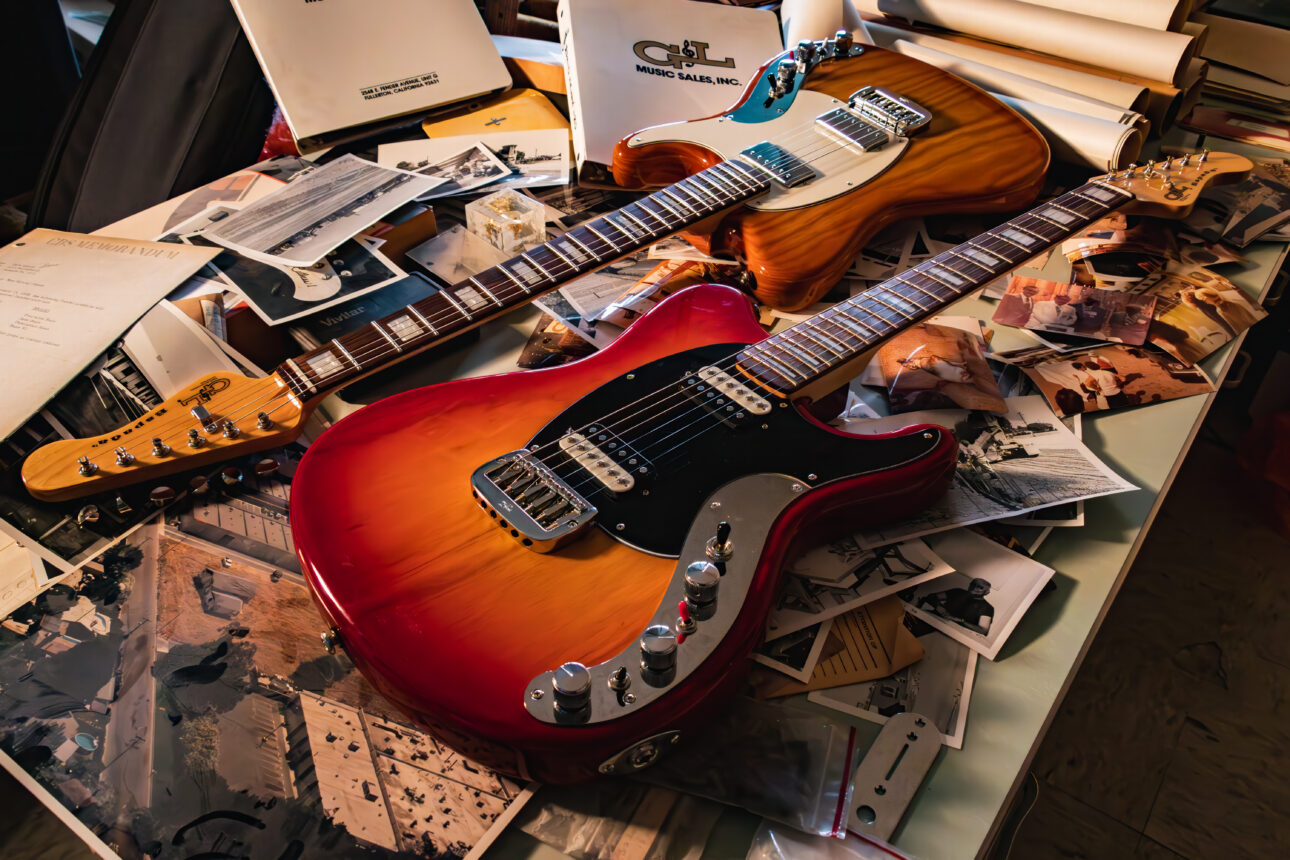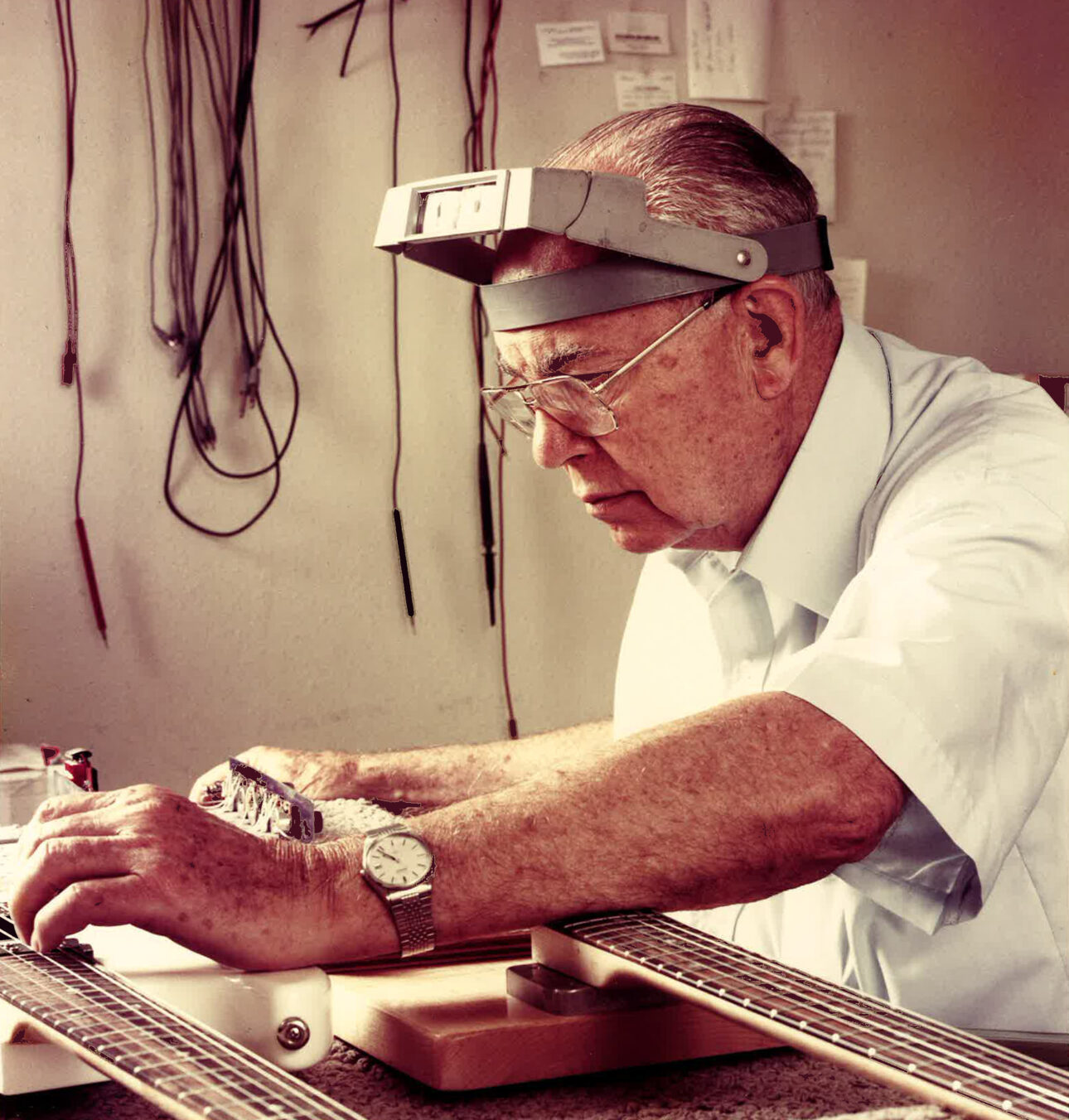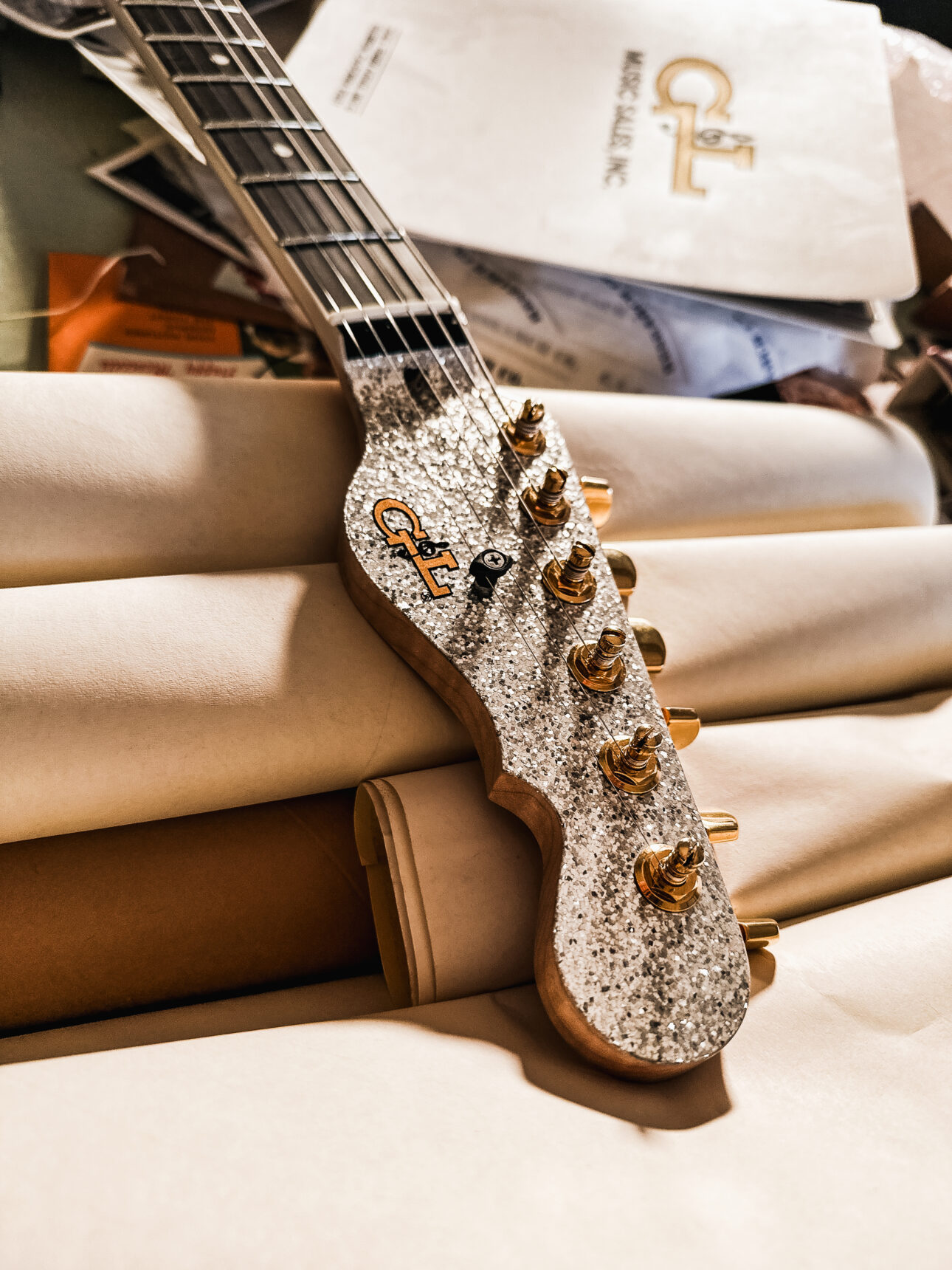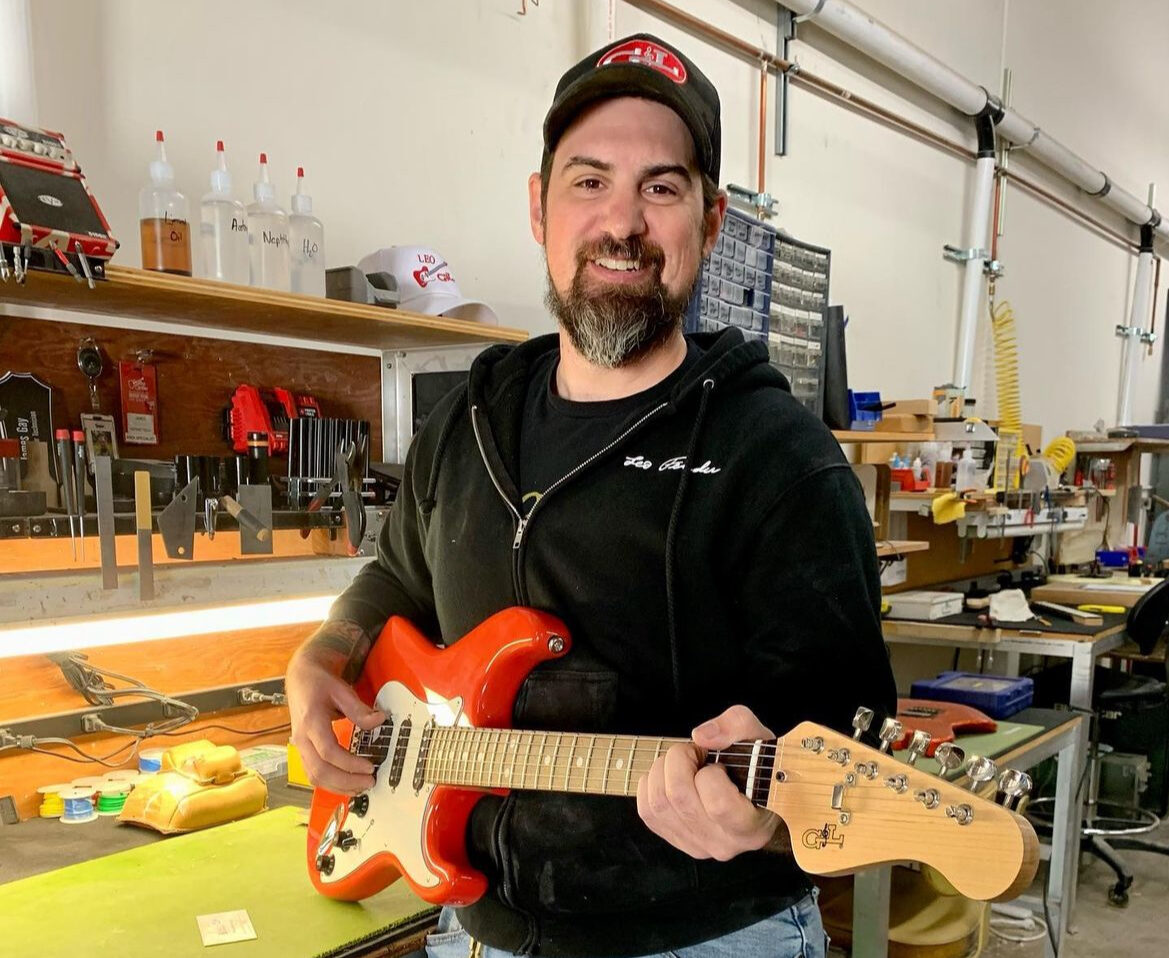When James Gay was 8 years old, his parents bought him his first guitar.
Unfortunately, it didn’t work.
Upon plugging it in, nothing but static came from the amp connected to Gay’s Squier Stratocaster. At the time, it was a disappointment, but the hideous sound that came out of that guitar on Christmas Day ultimately shaped the rest of Gay’s life up to this point.
While other elementary school kids were developing passions for sports or video games, Gay was obsessing over guitars — with an emphasis on maintaining them, fixing them and how they work as much as playing them. By the time he reached high school, he’d spend the bulk of his free time at the local music store in his hometown of Cincinnati, watching the employees work on instruments, asking them questions and playing the store’s guitars in the corner.
“Eventually, they hired me, and the manager was like ‘Let me show you how to do this so you can stop bugging us,’” Gay laughs.
From there, Gay furthered his guitar repair and building knowledge at the Musicians Institute in Hollywood before becoming a repair technician at Guitar Center and then bouncing around as a repairman and luthier for a handful of different companies both in America and Asia. While working primarily on acoustic and semi-hollowbody guitars at Taylor Guitars just outside of San Diego, Gay realized that he wanted to bring his decades of knowledge back to his original passion — Fender-style bolt-on solidbody electric guitars.

So when CEO and President of G&L Musical Instruments Dave McLaren reached out to him on social media about revamping and running the G&L Custom Shop, Gay jumped at the chance. Over the last few months, Gay has found himself not only leading the Custom Shop, but also lending a hand, wisdom and advice on the factory floor, effectively becoming an unofficial supervisor for much of G&L’s guitar-building operations.
For those unfamiliar, G&L is effectively the spiritual successor to the guitar giant known as Fender. It was founded in 1979 by Leo Fender and a pair of friends, where he worked until his death in 1991, and effectively continued the innovative processes he’d begun before selling Fender to CBS in 1965. With their primary line still made from scratch at their factory on Fender Avenue in Fullerton, California, the argument can be made that G&L guitars are technically more aligned with the Fender founder’s desires than modern Fender products.
SPIN visited the G&L factory to chat with Gay about his career and the changes he’s making in his new position.
SPIN: What brought you to the G&L Custom Shop?
James Gay: [McLaren] and I just hit it off really well. I came up here to interview, and we spent the whole day just talking and showing me around. It was so chaotic that I knew things could only go up. Things here have been in disarray and chaos for a couple years, but these types of guitars and basses are exactly what I’m the best at building. It’s right in my comfort zone, and I feel like I do some really good design work with stuff like this. I started here [in the beginning of December], and I’ve been diving into all of it since. The first month was just cleaning and organizing because it was just too chaotic to function, but now we’re actually starting to get orders pushed through. We’re also getting things cleaned up [in the factory]. I was brought in to be the Custom Shop Manager, but I’m currently supervising the overall production. I’m helping with quality control throughout the entire facility — even on the import stuff from Indonesia — and I’m helping those guys learn repair techniques that they didn’t know to turn potentially B-stock items into A-stock and “sellable as new” merchandise. Some of the guys in the facility are really good at what they do, but they’ve also been doing it the same way for a really long time — and things have evolved a little bit.
Let’s talk about that evolution. G&L obviously has historic ties to Leo Fender, but how are you modernizing and evolving everything here?
One of the things that my old boss told me about this gig is that at the end of the day, you have to approach this from the perspective of “If Leo Fender was still alive, he would have continued to evolve.” There’s a lot of heritage in the classic stuff and mojo about these instruments that I want to harness, but I also want to evolve it a little bit and get us up to par with all the other brands in our price point. We’re the last place where Leo Fender actually was — where he ended his guitar-making career — so we have that legacy. But it’s about evolving it and bringing the quality up and building really, really good electric guitars. That really just comes down to certain methods that we’re doing during the production process. We already have three really nice CNC machines that are the exact same machines Fender and a lot of the other major guitar manufacturers are using today, but we have problems like the different departments not communicating well with each other. There’s no overarching structure that reinforces how the process connects everything together in the end, so by the time a guitar gets to final assembly, lines can get crossed. Every production company that builds guitars is going to have things go wrong, but it’s about minimizing those problems. A lot of the guitars make it through and they’re fine, but there’s also a handful of guitars that make it through all the way to the end and then suddenly there’s a problem and we have to take the whole thing apart.

How do you go about raising the quality control for the whole factory while still keeping the Custom Shop a little extra special?
I want everybody here to approach things and view the end product the way that I view it. I want everyone to be their own inspector and see the level of detail that I can see, whether it’s in the raw wood or the polish department or anywhere else. Then we can hold ourselves to that top-tier standard on everything — because as much as Custom Shop needs to be a cut above the standard production line, the end result of both guitars should feel and play incredible. The only difference is really some different finish options, finish materials, fancier wood and some more options on the other stuff. In the standard production stuff, we use all of our own hardware and pickups, which we wind here in-house. With the Custom Shop, if someone really wants a different pickup or a different bridge, we’ll order it and put it in there within reason. You just get a little more control and some extra options when you pay that extra money.
It feels like the G&L Custom Shop is between the $10,000 “master built” types of things from the massive guitar giants and the super small batch “everything is custom” options from boutique companies. How are you finding balance as a mid-sized guitar company’s custom shop?
It’s very similar to the way I’ve been doing things the last several years. I was building guitars entirely on my own as a side business and as a hobby. One thing I did for fun was to make replicas of famous guitars — Eddie Van Halen, Dimebag Darrell, Randy Rhoads, my guitar heroes — as a way to refine my chops. I’d try to make them exactly the same as the originals, and that’s the way we approach it in a place like this. We have the capability to get really into the weeds with the design and let the customer pick through the minutiae of everything, or we can give them more of a standard book of options where they get to pick and choose some little things. That doesn’t necessarily have to get all the way to the top of the price tag. The other thing that’s a cool little advantage about being in the middle is that we have a lot of bigger dealers, but we also have other shops that essentially act as our customers. They either don’t carry Fender or Fender doesn’t do what they want, so they do our “built to order” stuff for their own inventory. If what they order does well — especially if we put it up on social media — we can convert it into a standard model, whereas a bigger operation has a lot more red tape to cut through for something like that.

How have you seen the guitar industry change in your decades as a part of it?
The quality control across the whole industry has come up dramatically in the last 30-40 years. When I first started working in the industry, the earlier Chinese import guitars that were coming out were really bad. Fast-forward 10 years to when I started working at Guitar Center, I got a chance to see just about anything that came out, and everybody — Indonesia, Korea, China, everywhere — stepped it up. The companies in charge of all those imports have done a better job sending people over to those factories to raise the QC up, and we’re doing the same thing like with our import models. Spending a solid 15 years working in a repair shop and maintaining guitars for people gives you a lot of time to see all the things that continuously go wrong, which is how I approach guitar design now. I know where the problems start to occur, so I approach guitar design and building from the perspective of not running into those same issues. Automation has helped bring up the overall quality across the entire industry, because it’s really not practical to make a guitar completely by hand anymore like they did in the ‘40s and ‘50s. I’ve played a lot of old desirable Fenders and Gibsons, and half of them are really bad-playing guitars in my experience — unless somebody spent a lot of time and money into getting those guitars maintained and worked on.





